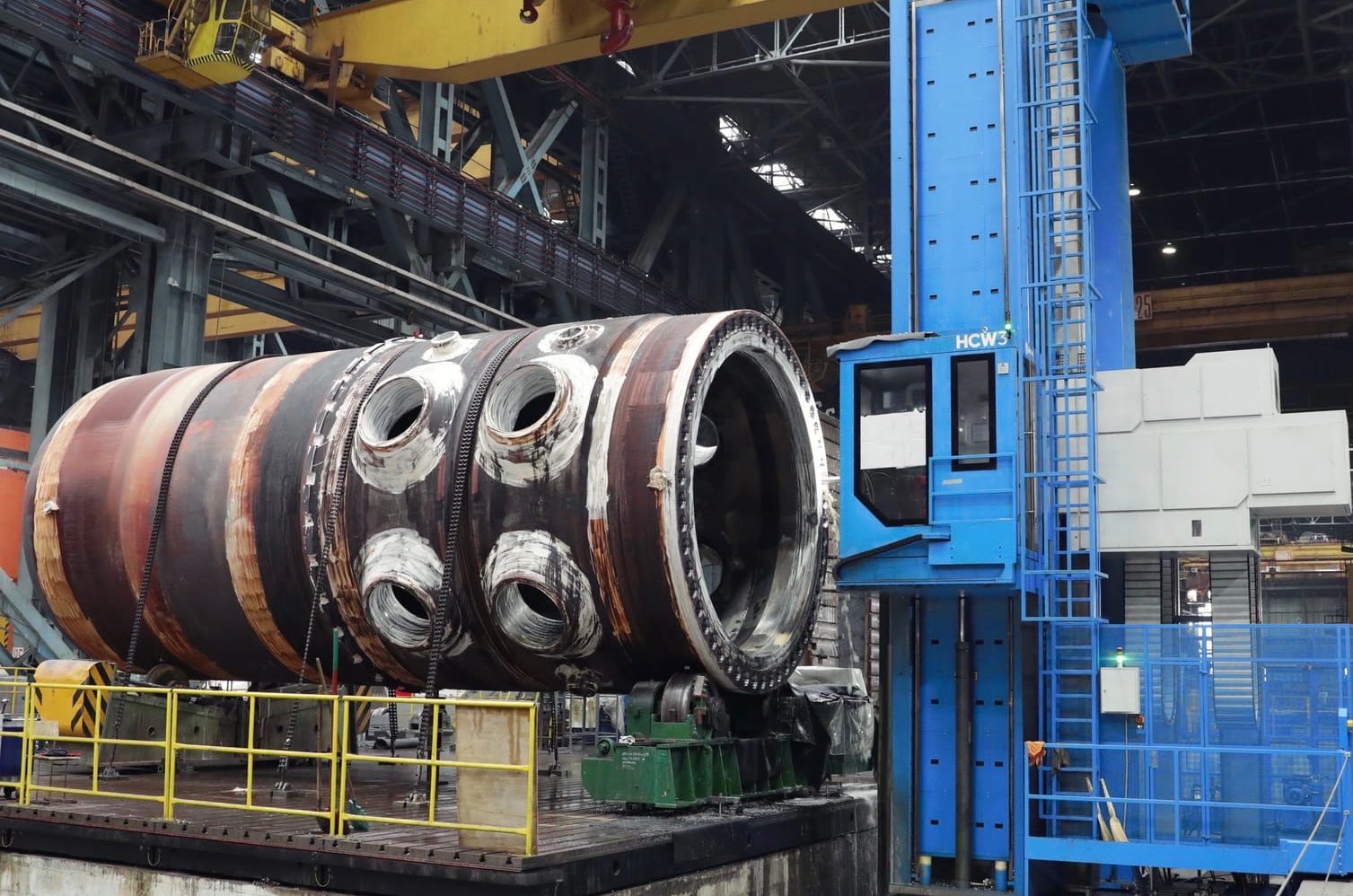
Rooppur as Symbol of Friendship
back to contentsAlexander Shevchenko, Deputy Director of AtomStroyExport (ASE, Rosatom’s engineering division) in Bangladesh, said Rosatom appreciated the contribution of Bangladeshis involved in the construction of Rooppur nuclear power plant. “There are many highly qualified engineers and workers among them,” he told media.
Shevchenko also reminded that Russia had committed itself to training personnel for the nuclear plant as part of the Rooppur construction project. A special training program was developed jointly with Bangladesh. “Many employees from Bangladesh do practical training in Russia, including internship at the nuclear power plants in operation. The project also provides for the construction of a training center here, in Rooppur. The center will offer a number of vocational training courses taught by Russian professionals for their Bangladeshi colleagues. They see Bangladeshis as very good, promising and hard-working students capable of solving complex tasks,” Shevchenko said.
Speaking about the impact of the coronavirus pandemic on the construction project, the deputy director noted that the situation was under full control and made no great impact on the implementation of the Rooppur project. He explained that all necessary quarantine measures, including mandatory temperature checks at the entrance to the construction site and office buildings, regular disinfection of the premises and mandatory mask wearing, had been taken at the start of the pandemic. These measures are still in force, and so are restrictions on leaving places of residence – the villages of Green City and Bangla Kutir – for Russian employees. In order to prevent the spread of coronavirus at the Rooppur construction site, a response team has been set up to analyze the situation and recommend necessary measures. The team holds meetings three times a week. The response team follows guidelines and instructions of the competent authorities of Bangladesh and Russia. Local management has established procedures for COVID-19 testing and providing medical care when necessary. All newly arriving employees are routinely placed under quarantine.

“I am glad to say that there have been no project-affecting issues caused by the coronavirus thanks to the measures taken and well-organized work of the medical staff from Russia and Bangladesh,” Shevchenko said.
He was very positive on the cooperation between the two countries on the Rooppur project. “I was impressed by the Bangladeshi people and, most importantly, their ability and willingness to work for their home country,” Alexander Shevchenko noted.
In mid-February, a bilateral delegation spent two days inspecting the progress of the Rooppur construction project. Yafes Osman, Minister of Science and Technology, on behalf of Bangladesh and Alexander Lokshin, First Deputy Director General for operations management at Rosatom and President of ASE engineering company, on behalf of Russia, headed the delegation. It also included representatives of the Ministry of Science and Technology of Bangladesh, Bangladesh Atomic Energy Commission (BAEC), Bangladesh Atomic Energy Regulatory Authority (BAERA) and, on behalf of Russia, ASE Engineering Company, RosEnergoAtom, Russian nuclear regulator RostechNadzor and nuclear industry experts. “It is very important to keep the project on track while maintaining the highest quality of work,” Yafes Osman noted.
Also in mid-February, Alexey Deriy was appointed new Vice President of ASE and Director for Rooppur construction project. Previously, he had been in charge of the Kursk NPP construction project in Russia. Introducing Alexey Deriy in his new capacity, Alexander Lokshin pointed out that the experience and competencies he had acquired during the construction of the Kursk nuclear power plant and other nuclear facilities would prove useful in the high-priority construction project in the People’s Republic of Bangladesh. Lokshin also thanked Sergey Lastochkin, who had been in charge of the Rooppur project before, for his work in moving the project forward and a major contribution to the development of the nuclear industry.
Russian expert Nikolai Popov from the Design Engineering Analysis and Optimization Department of AtomEnergoProekt (part of Rosatom) participated in a webinar organized by Rosatom for Bangladesh reporters. Rosatom’s expertise in nuclear construction in Russia and abroad enables the Russian nuclear corporation to develop the best solutions for on-site construction and installation operations and deliver nuclear plant projects on time and on budget, he highlighted. Popov explained construction planning, design management and project organization stages and processes needed to complete the construction of a nuclear power plant in a timely and efficient manner.
He reminded that Rosatom’s engineering division had designed and built 92 power units, including those under construction, in 14 countries in compliance with the strictest international safety regulations. Its extensive expertise in design and construction of nuclear plants around the world plays a crucial role in meeting the construction schedule for the Rooppur nuclear power plant despite its local geographical and environmental specifics. The Rooppur NPP will have a design life of 60 years.
Construction of Bangladesh’s first nuclear power plant is fully on schedule. Leading Russian companies continue to manufacture core machinery and equipment for the nuclear island of the plant. In mid-February, the Volgodonsk-based production facility of AEM Technologies (part of Rosatom’s mechanical engineering division AtomEnergoMash) passed another milestone in the production of a reactor pressure vessel (RPV) for Rooppur Unit 2. After radiographic testing, the 320-ton reactor pressure vessel was placed into a gas furnace, and six thermocouples were installed. The PRV was held in the furnace for three days at a temperature ranging from 10 to 650 degrees Celsius. During this period, readings of the thermal detectors were recorded to ensure that the vessel was tempered properly. The heat treatment of the reactor pressure vessel aims to relieve weld stress and obtain the required mechanical properties of the steel. A complete set of the core equipment for Unit 1, including the reactor and four steam generators, was shipped to the customer in 2020.




